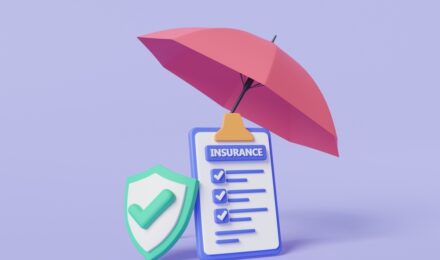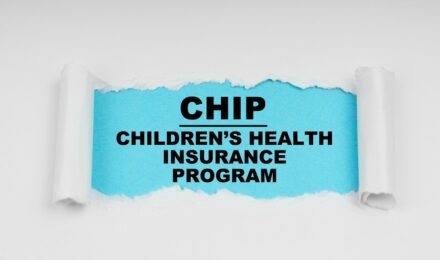Contents
- 1 The Transformative Power of the Section 8 Program
- 2 Beyond Rent: What Section 8 Covers
- 3 Eligibility: Can You Qualify?
- 4 Section 8 vs. Other Housing Assistance Programs
- 5 Challenges: Why Isn’t Everyone Benefiting?
- 6 How to Apply for Section 8
- 7 Beyond Section 8: Other Assistance Programs
- 8 Building a Brighter Future
Housing insecurity can feel like an insurmountable challenge, but programs like Section 8 offer a glimmer of hope. By providing essential housing support, this initiative helps individuals and families rebuild stability and security. What makes the Section 8 program so impactful? Let’s explore its purpose, benefits, and how it fits into the broader landscape of federal housing assistance.
The Transformative Power of the Section 8 Program
Imagine the relief of choosing a home that meets your needs—one that’s safe, comfortable, and affordable. That’s the heart of the Section 8 program, also known as the Housing Choice Voucher Program. It doesn’t just offer financial assistance; it provides autonomy.
While public housing places tenants in government-owned units, Section 8 allows recipients to use their vouchers for privately owned properties. This freedom to choose isn’t just practical—it’s life-changing. It enables families to live in communities with better schools, job opportunities, and healthcare access. Isn’t that what everyone deserves?
Beyond Rent: What Section 8 Covers
The Section 8 program goes well beyond covering rent. It’s designed to address the broader costs of maintaining a home, making it as adaptable as the challenges it aims to solve.
Utility bills are often included, easing the financial burden for many families. The program may also cover security deposits, allowing participants to secure housing without the upfront strain. In some cases, accessibility modifications for individuals with disabilities are supported, ensuring homes aren’t just places to live—they’re places to thrive.
This flexibility reflects a deeper understanding of what it takes to truly support a household. After all, isn’t stability about more than just paying the rent?
Eligibility: Can You Qualify?
Could the Section 8 program be your path to secure housing? Eligibility depends on a mix of income, need, and other factors designed to prioritize the most vulnerable.
Income must fall below 50% of the median for your area, with preference given to households earning 30% or less. Families facing homelessness or extreme rent burdens are also given priority. While these thresholds ensure help goes to those in dire need, the application process is accessible and worth pursuing.
Citizenship or residency requirements apply, but a criminal record doesn’t automatically disqualify applicants. It’s a program built to help—not to exclude. So why not take the first step?
Section 8 vs. Other Housing Assistance Programs
Federal housing assistance programs come in various forms, each with unique benefits. How does Section 8 stand out?
Unlike public housing, which confines residents to specific units, Section 8 vouchers let families choose housing in the private market. This freedom opens doors—literally and figuratively—to better opportunities and living conditions.
Other programs, like the Low-Income Housing Tax Credit (LIHTC), create affordable housing by incentivizing private developers. Section 8 vouchers can sometimes be used in LIHTC properties, expanding options even further. This synergy between programs ensures no one solution works in isolation.
Challenges: Why Isn’t Everyone Benefiting?
The Section 8 program is powerful, but it’s not without challenges. The biggest hurdle? Demand far outpaces supply.
Waiting lists can be years long in some areas, requiring patience and persistence. Finding a landlord willing to accept Section 8 vouchers can also be difficult, especially in competitive rental markets. While these barriers are real, they aren’t insurmountable. With determination and resourcefulness, many families successfully navigate the process.
How to Apply for Section 8
Ready to take the leap? Here’s how to begin:
- Contact Your Local PHA: Applications are managed by Public Housing Authorities. Start by reaching out to your local office.
- Gather Essential Documents: Proof of income, identification, and housing need will strengthen your application.
- Join the Waiting List: Demand often exceeds availability, but persistence is key.
- Secure Your Home: Once you receive a voucher, you’ll need to find a landlord who accepts Section 8. The property must meet HUD’s safety and quality standards.
While the process may take time, the end result—a stable, secure home—is worth every effort.
Beyond Section 8: Other Assistance Programs
Section 8 is a cornerstone of federal housing aid, but it’s not the only resource available. Programs like Emergency Rental Assistance (ERA) and public housing provide additional safety nets.
ERA offers short-term relief for rent and utilities, perfect for those facing immediate financial crises. Public housing, meanwhile, provides income-based rental options in government-owned properties. Exploring these programs can uncover alternative solutions that complement Section 8.
Building a Brighter Future
Housing isn’t just about having a place to sleep—it’s about creating a foundation for a better life. The Section 8 program embodies this principle by offering not just financial relief but also freedom and opportunity.
If you or someone you know is struggling with housing insecurity, take that first step. Reach out to your local PHA, learn about your options, and start building a future where stability isn’t a dream—it’s a reality.
Resources:
- U.S. Department of Housing and Urban Development (HUD) – Official Section 8 Program Information: hud.gov/program_offices/public_indian_housing/programs/hcv/about
- National Low Income Housing Coalition – Housing Choice Voucher Fact Sheet: nlihc.org/sites/default/files/Housing-Choice-Voucher.pdf
- Consumer Financial Protection Bureau (CFPB) – Resources on Rental Assistance Programs: consumerfinance.gov/coronavirus/mortgage-and-housing-assistance/renter-protections/
Contents
- 1 The Transformative Power of the Section 8 Program
- 2 Beyond Rent: What Section 8 Covers
- 3 Eligibility: Can You Qualify?
- 4 Section 8 vs. Other Housing Assistance Programs
- 5 Challenges: Why Isn’t Everyone Benefiting?
- 6 How to Apply for Section 8
- 7 Beyond Section 8: Other Assistance Programs
- 8 Building a Brighter Future
Housing insecurity can feel like an insurmountable challenge, but programs like Section 8 offer a glimmer of hope. By providing essential housing support, this initiative helps individuals and families rebuild stability and security. What makes the Section 8 program so impactful? Let’s explore its purpose, benefits, and how it fits into the broader landscape of federal housing assistance.
The Transformative Power of the Section 8 Program
Imagine the relief of choosing a home that meets your needs—one that’s safe, comfortable, and affordable. That’s the heart of the Section 8 program, also known as the Housing Choice Voucher Program. It doesn’t just offer financial assistance; it provides autonomy.
While public housing places tenants in government-owned units, Section 8 allows recipients to use their vouchers for privately owned properties. This freedom to choose isn’t just practical—it’s life-changing. It enables families to live in communities with better schools, job opportunities, and healthcare access. Isn’t that what everyone deserves?
Beyond Rent: What Section 8 Covers
The Section 8 program goes well beyond covering rent. It’s designed to address the broader costs of maintaining a home, making it as adaptable as the challenges it aims to solve.
Utility bills are often included, easing the financial burden for many families. The program may also cover security deposits, allowing participants to secure housing without the upfront strain. In some cases, accessibility modifications for individuals with disabilities are supported, ensuring homes aren’t just places to live—they’re places to thrive.
This flexibility reflects a deeper understanding of what it takes to truly support a household. After all, isn’t stability about more than just paying the rent?
Eligibility: Can You Qualify?
Could the Section 8 program be your path to secure housing? Eligibility depends on a mix of income, need, and other factors designed to prioritize the most vulnerable.
Income must fall below 50% of the median for your area, with preference given to households earning 30% or less. Families facing homelessness or extreme rent burdens are also given priority. While these thresholds ensure help goes to those in dire need, the application process is accessible and worth pursuing.
Citizenship or residency requirements apply, but a criminal record doesn’t automatically disqualify applicants. It’s a program built to help—not to exclude. So why not take the first step?
Section 8 vs. Other Housing Assistance Programs
Federal housing assistance programs come in various forms, each with unique benefits. How does Section 8 stand out?
Unlike public housing, which confines residents to specific units, Section 8 vouchers let families choose housing in the private market. This freedom opens doors—literally and figuratively—to better opportunities and living conditions.
Other programs, like the Low-Income Housing Tax Credit (LIHTC), create affordable housing by incentivizing private developers. Section 8 vouchers can sometimes be used in LIHTC properties, expanding options even further. This synergy between programs ensures no one solution works in isolation.
Challenges: Why Isn’t Everyone Benefiting?
The Section 8 program is powerful, but it’s not without challenges. The biggest hurdle? Demand far outpaces supply.
Waiting lists can be years long in some areas, requiring patience and persistence. Finding a landlord willing to accept Section 8 vouchers can also be difficult, especially in competitive rental markets. While these barriers are real, they aren’t insurmountable. With determination and resourcefulness, many families successfully navigate the process.
How to Apply for Section 8
Ready to take the leap? Here’s how to begin:
- Contact Your Local PHA: Applications are managed by Public Housing Authorities. Start by reaching out to your local office.
- Gather Essential Documents: Proof of income, identification, and housing need will strengthen your application.
- Join the Waiting List: Demand often exceeds availability, but persistence is key.
- Secure Your Home: Once you receive a voucher, you’ll need to find a landlord who accepts Section 8. The property must meet HUD’s safety and quality standards.
While the process may take time, the end result—a stable, secure home—is worth every effort.
Beyond Section 8: Other Assistance Programs
Section 8 is a cornerstone of federal housing aid, but it’s not the only resource available. Programs like Emergency Rental Assistance (ERA) and public housing provide additional safety nets.
ERA offers short-term relief for rent and utilities, perfect for those facing immediate financial crises. Public housing, meanwhile, provides income-based rental options in government-owned properties. Exploring these programs can uncover alternative solutions that complement Section 8.
Building a Brighter Future
Housing isn’t just about having a place to sleep—it’s about creating a foundation for a better life. The Section 8 program embodies this principle by offering not just financial relief but also freedom and opportunity.
If you or someone you know is struggling with housing insecurity, take that first step. Reach out to your local PHA, learn about your options, and start building a future where stability isn’t a dream—it’s a reality.
Resources:
- U.S. Department of Housing and Urban Development (HUD) – Official Section 8 Program Information: hud.gov/program_offices/public_indian_housing/programs/hcv/about
- National Low Income Housing Coalition – Housing Choice Voucher Fact Sheet: nlihc.org/sites/default/files/Housing-Choice-Voucher.pdf
- Consumer Financial Protection Bureau (CFPB) – Resources on Rental Assistance Programs: consumerfinance.gov/coronavirus/mortgage-and-housing-assistance/renter-protections/






